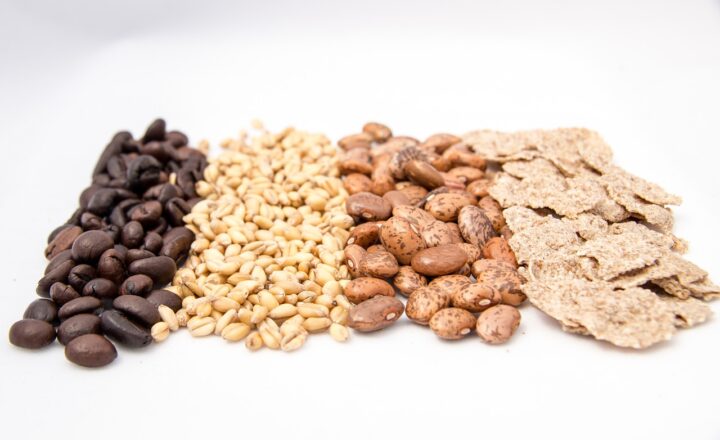
Designing a workout routine that fits your unique body type is key to achieving your fitness goals efficiently and effectively. Just like people come in all shapes and sizes, different body types respond differently to various forms of exercise. Whether you’re looking to build muscle, burn fat, or improve overall fitness, understanding how to tailor your workouts to suit your body type can make a significant difference in your results.
In this article, we’ll explore the three main body types—ectomorph, mesomorph, and endomorph—and offer guidance on how to design a workout routine that works best for each. We’ll also discuss how to account for other factors like metabolism, genetics, and personal goals.
1. Understanding Your Body Type: Ectomorph, Mesomorph, and Endomorph
The concept of body types, or somatotypes, was developed in the 1940s by psychologist William Sheldon. According to his theory, people generally fall into one of three categories based on their natural physique:
- Ectomorph: Ectomorphs are typically lean, with a narrow frame, long limbs, and a fast metabolism. They tend to find it difficult to gain muscle mass or body fat, making weight gain a challenge.
- Mesomorph: Mesomorphs are naturally muscular and have a medium frame. They tend to gain muscle easily and have a balanced metabolism that allows them to both lose and gain weight with relative ease.
- Endomorph: Endomorphs have a larger, softer body with a higher tendency to store fat. They often struggle with weight loss due to a slower metabolism, but they can build muscle effectively.
Why It Matters: Each body type responds differently to exercise and diet. Understanding your body type helps you create a workout routine that maximizes your strengths and addresses your challenges.
2. Designing a Workout Routine for Ectomorphs
If you have an ectomorphic body type, you likely struggle with gaining muscle mass, even if you eat a lot and exercise regularly. For ectomorphs, the key to success lies in focusing on strength training and minimizing excessive cardio, which can burn calories that your body needs for muscle growth.
Strength Training: Ectomorphs should prioritize compound movements that target multiple muscle groups, such as squats, deadlifts, bench presses, and pull-ups. These exercises stimulate muscle growth and help build overall strength. Aim for heavier weights with lower reps (6-8 per set) to encourage muscle hypertrophy.
Limit Cardio: While cardio is important for overall health, ectomorphs should limit it to 1-2 sessions per week to avoid burning too many calories. Focus on low-impact activities like walking or swimming to maintain cardiovascular health without compromising muscle gain.
Diet: Ectomorphs need to consume more calories than they burn to support muscle growth. A diet rich in protein, healthy fats, and complex carbohydrates will provide the energy and nutrients needed to build muscle mass. Aim for 5-6 small meals a day, and consider incorporating protein shakes or smoothies for added calories.
3. Designing a Workout Routine for Mesomorphs
Mesomorphs are the body type that most people envy because they gain muscle easily and typically have a balanced metabolism. If you’re a mesomorph, you’ll want to capitalize on your natural ability to build muscle while maintaining your cardiovascular health.
Balanced Strength and Cardio: Mesomorphs benefit from a mix of strength training and cardio. Incorporate compound lifts (such as squats, deadlifts, and overhead presses) alongside isolation exercises to target specific muscles. Aim for moderate weights with 8-12 reps per set to encourage muscle definition.
Cardio for Fat Loss: Since mesomorphs can gain fat if they aren’t mindful of their diet and activity levels, regular cardio is important. High-intensity interval training (HIIT) is particularly effective for maintaining lean muscle mass while burning fat.
Diet: Mesomorphs should focus on a balanced diet with a mix of proteins, healthy fats, and carbohydrates. Tracking macronutrients (protein, fats, carbs) can help you fine-tune your intake based on whether your goal is to bulk up, tone, or cut body fat.
4. Designing a Workout Routine for Endomorphs
Endomorphs tend to gain weight easily and may struggle with fat loss due to a slower metabolism. For endomorphs, the focus should be on high-intensity workouts that maximize calorie burn and muscle retention.
High-Intensity Strength Training: Endomorphs should focus on full-body workouts that incorporate compound lifts and high-intensity circuits. Workouts should involve moderate weights with higher reps (10-15 per set) to increase calorie expenditure while maintaining muscle mass.
Cardio for Weight Loss: Cardiovascular exercise is essential for endomorphs looking to shed body fat. Aim for 3-5 cardio sessions per week, incorporating a mix of steady-state cardio (such as jogging or cycling) and HIIT to boost metabolism.
Diet: Endomorphs should be mindful of their calorie intake, focusing on a diet high in lean protein, vegetables, and complex carbohydrates. Reducing refined sugars and processed foods will help manage weight gain and promote fat loss.
5. Incorporating Flexibility and Mobility Training
Regardless of body type, flexibility and mobility training should be an essential part of your workout routine. Stretching and mobility exercises help prevent injury, improve range of motion, and enhance overall performance in strength training and cardio activities.
Why It Matters: Incorporating yoga, Pilates, or dynamic stretching into your weekly routine can improve muscle recovery, reduce soreness, and enhance your ability to perform compound lifts effectively.
How to Incorporate: Set aside 10-15 minutes at the end of each workout for static stretching or mobility drills. Focus on key areas such as the hips, shoulders, and lower back, which tend to tighten after heavy lifting or intense cardio.
6. Accounting for Other Factors: Metabolism, Age, and Gender
While body type is a useful guideline for designing your workout routine, other factors like metabolism, age, and gender can also impact how your body responds to exercise.
- Metabolism: Your metabolic rate affects how quickly you burn calories and build muscle. Ectomorphs generally have fast metabolisms, while endomorphs may have slower ones. Consider adjusting your caloric intake based on your individual metabolic needs.
- Age: As you age, your metabolism naturally slows down, and muscle mass can decline. Adjust your workout routine to include more strength training and prioritize recovery to maintain muscle and prevent injury.
- Gender: Men and women may have different hormone levels that affect how they build muscle or lose fat. Women, for instance, tend to have a harder time building muscle due to lower testosterone levels, but can still achieve excellent results with consistent strength training.
7. Setting Realistic Goals and Tracking Progress
Designing a workout routine that suits your body type is only effective if you set realistic goals and track your progress. Start by identifying your specific fitness objectives, such as gaining muscle, losing fat, or improving endurance. Then, create a plan with measurable milestones.
Tracking Progress: Keep a fitness journal or use an app to log your workouts, track your weight and measurements, and record how you feel after each session. Regularly reviewing your progress will help you stay motivated and make adjustments to your routine as needed.
8. Staying Consistent and Adjusting Over Time
Consistency is key when it comes to seeing results from your workout routine. While it’s important to stick to your plan, remember that your body’s needs may change over time. Be open to adjusting your routine based on how your body responds to exercise, and don’t be afraid to switch things up to avoid plateaus.
How to Stay Consistent: Build a workout schedule that fits into your lifestyle, whether it’s working out in the mornings, during lunch breaks, or in the evenings. Make fitness a habit, and over time, it will become a natural part of your daily routine.
Conclusion
Designing a workout routine that fits your unique body type is a powerful way to maximize your fitness potential. By understanding whether you’re an ectomorph, mesomorph, or endomorph, you can tailor your workouts to meet your specific needs, helping you build muscle, burn fat, and improve overall fitness.
Remember, everyone’s body is different, and the key to success lies in finding a routine that works for you. With consistency, proper nutrition, and a workout plan that suits your body type, you can achieve your fitness goals and lead a healthier, more active life.






